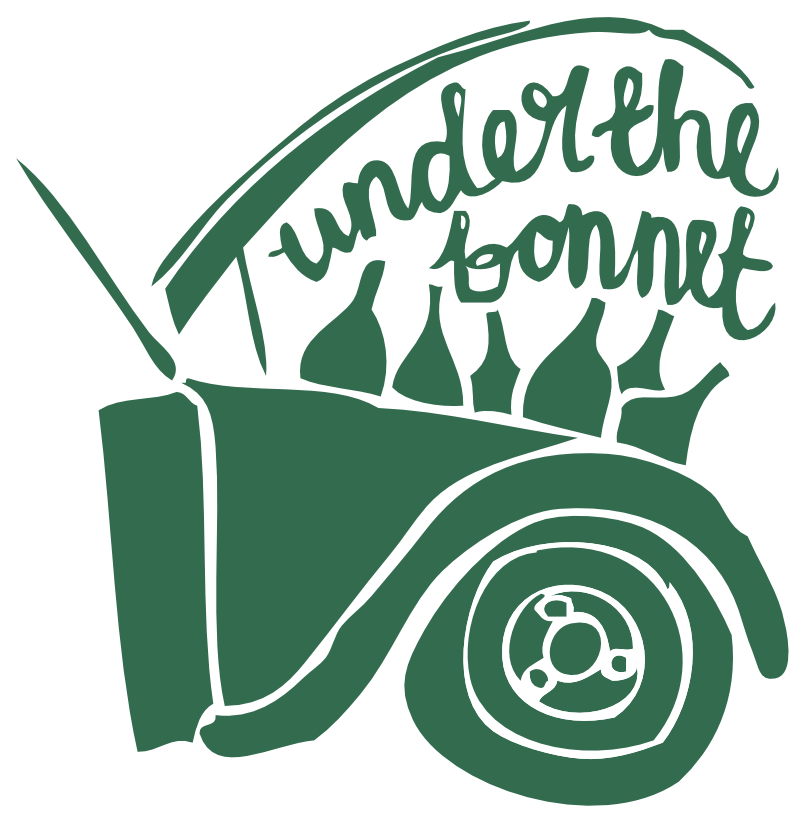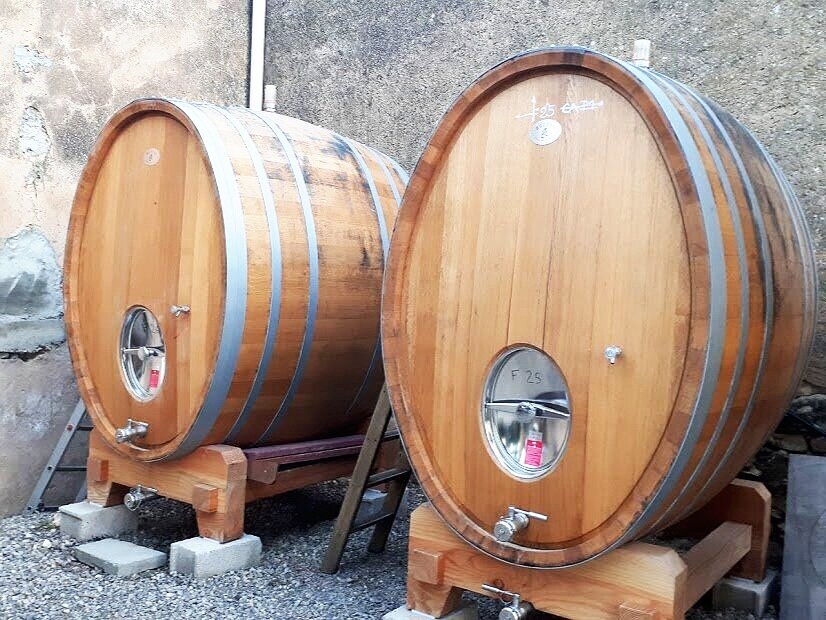PROJECT 108
FRANCE, LANGUEDOC, CORBIERES
Whilst visiting Daniel Ham for harvest over summer, dinner in the Offbeat shed at Botleys Farm found the farm’s owner- Hugo Stewart of Domaine Hugo- opening a minimally-labelled bottle of red for the table. Intrigued, he revealed to us that it was the first release from the side project of his friend and one-time business partner, Paul Old.
Hugo & Paul started the Corbières-located Les Clos Perdus together in 2003; with half a hectare of old-vine Carignan. 12 years later the biodynamic domaine had grown to 20 hectares and Hugo returned home to the UK, with Paul staying to continue the operation.
Paul had left Australia to work as a dancer in London, before retraining as a winemaker and relocating to the south of France to begin a life-long love affair with old vine Carignan. By his definition, Les Clos Perdus- whilst being certified biodynamic and using only minimal amounts of SO2- was not natural. Determined to produce a true “zero-zero” wine, Project 108 was born.
Having just received the first 108 bottling; Rouge 2018, we caught up with Paul to learn more:
How are you going today Paul?
I’m just going through that wind-down from vintage, it's always weird each year: it’s a bit like being shot up in a space shuttle, but then when you come down to earth, it's a bit of a shock: where am I, what's happening?
Re-entry into the atmosphere. Could you tell us a little about how Les Clos Perdus led to Project 108?
I've been following the natural wine scene since the early 2000s, and was just fascinated by the wines. It was such an education. I've been feeding off that right from the beginning of my winemaking journey and eventually I thought I have to stop being a spectator and jump on the wagon really, to try and make a truly natural wine.
The best way for me to get to a zero-zero wine was that this Project 108 idea will feed Les Clos Perdus, and then Les Clos Perdus can feed Project 108 with the knowledge I've built up over the years in the vineyards here, in the varieties. That's really how it sort of came about.
The aim was to only have really good viticulture and vinification skills, to keep something alive and full of energy and... don't touch it, you know, as much as possible.
We’ve just received the first release- the 2018; what was the process?
There's another vineyard up the hill from where I live, with the same heavy clay terroir, an organic domaine. I've been using their fruit. The 2018 came from some 100 year old Carignan they've got and some quite old Mourvedre- 45 years old- which is about as old as it gets around here.
I've always found in the past that the two go together really nicely; old Carignan & Mourvedre. Mourvedre is a very reductive character, it really loves air. Old Carignan can have great acids and phenolic maturity at low ph's, the acid keeps the wine protected from microbial activity. So it sounded like a good starting point for me to put these two muscular brothers together and let them look after one another.
There was a little bit of a whole bunch, probably 20% in there. Otherwise it was all destemmed and they were fermented in old 600 litre barrels. And early on, given a lot of air. The key to a natural wine is that you need it to finish the ferment, you don't want it to be attacked by microbes whilst there's still sugars there. So you give it a lot of air in the early stages, creating a big population of yeasts so there's enough there to pull it through the ferments.
I don’t have one of these - but where I made it they've got this air pressure thing, you literally push it into the vat and it pumps air into it, bubbles away until you're just getting a fresh fruit smell coming through. It’s considerably less aggro than pigeage but achieves a similar result.
I fermented them separately, but afterward there were space problems. So I put these two 2,500 litre foudres outside and filled them up directly. I let them age outside, through winter, then brought them together just before bottling.
I bottled the whole 5000 litres in quite a bold move…
Mourvedre when you first put it in the bottle, can get quite grumpy and it did; get really grumpy. I thought oh gosh I’ve blown that, cashed in my dancer’s pension for nothing! But then, thankfully as it’s aged it's becoming easier and easier.
How are the 2019 & 2020 Project 108 cuvees looking at the moment?
In 2019 I made a 100% Carignan; I'll bottle that next spring. Down in the cellar at the moment from 2020 I've made a really long maceration Muscat and Macabeu together, which I really love. I'll find myself going down there and just sitting next to the cuve and drinking the stuff.
But yes, I think Carignan can be super elegant, if it's handled really well. I've just focused on trying to capture that display of Carignan that I know it can do so well but I feel I haven't ever managed it before.
I think it only works with very old Carignan; you have to pick it at the right window of ripeness, when it’s in it’s acid backbone stage. If you miss that you really have to wait until it’s at more phenolic ripeness; but then you have a different character. At the moment it looks fantastic, that really pretty strawberry almost-Pinot character.
When I bottle that I'll also bottle that macerated white that I've got downstairs.
How has the 2020 vintage been for you there?
It’s been a horrendous vintage really.
I've got three very different terroirs: one’s right down near the Pyrenees, then I've got some really isolated vines in the very high Corbiere hills. The other vines are near where I live, on Corbieres Maritime right next to the sea.
Well, we got this humid hot weather. We got about four times the level of rainfall that we normally get. Normally mildew is unheard of, but it almost decimated a lot of the area this year.
I usually have to treat maybe seven times around here and this year I had to treat about 16 times. It just kept raining. We lost a lot of fruit just to the mildew. Then around August, the temperatures really went off and went very humid for about 10 days. So the rot set in. I had to do a lot of selection.
Then in the high Corbieres, I got attacked by the pigs. Because of COVID-19 the hunters weren't hunting, so there were just too many wild pigs, they broke through the electric fence, ate 100% of some of my vineyards.
Of course the year's been so crazy everywhere so I was really determined to make some fantastic wine no matter what, make something of this mad year.
It was a really intense selection with my crew, they’re fantastic, they can see disease anywhere. They'd been working with me for about 10 years. They’re a Spanish climbing team, and work really well together. We took about three times the normal amount of time to pick and ended up with about half the fruit. Normally I'm making about 40,000 bottles downstairs for Les Clos Perdus, this year I've got about 15,000 bottles.
But, I quite enjoyed the fact that I've defied the odds and I've got some really nice stuff in the cave. I just had to get in there and do what I had to do to end up with the quality.
Now in Stock
Red
NEW 2018 - ROUGE - CARIGNAN, MOURVEDRE
WHOLESALE ONLY
FOR PRICE LIST ENQUIRIES, PLEASE EMAIL hello@winesutb.com
CARIGNAN & MOURVEDRE AGING OUTDOORS OVER WINTER IN THE FOUDRES.



